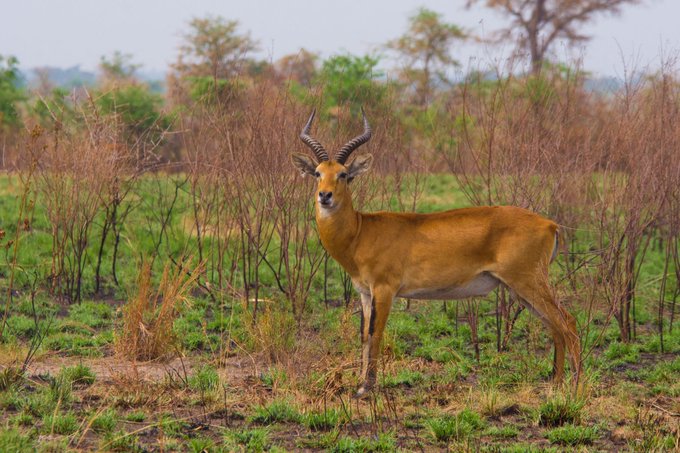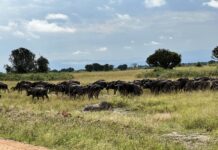The Executive Director of Uganda Wildlife Authority (UWA) Sam Mwandha flagged off the translocation of 200 Kobs from Murchison Falls Conservation Area to Kidepo Valley Conservation Area. The exercise involved 170 females and 30 males so as to increase on the kob population found in Kidepo Valley National Park.
This is inline with the Uganda Wildlife Authority mandate of restoration of wildlife species in their former range lands thereby improving tourism in the park.
About Kidepo Valley National Park
Kidepo Valley National Park is situated in distant Northeastern Uganda, near the borders of Kenya and South Sudan.
Kidepo features a breathtaking landscape covering a land area of 1442sq.km. It lies at an altitude of 914 meters, a low-lying area along the valley floor, and 2,750 meters – Morungole Mountain peak. There are two rivers in Kidepo – the Narus and Kidepo rivers.
Kidepo Valley National Park was created in 1962, the same period when Uganda attained its independence. It is the 3rd biggest park and a bio-diverse protected area with over 77 species of mammals, 470 bird species, and other wildlife. It is important to note that the park is also home to a number of other large mammals, including; elephants, giraffes, lions, and leopards.
The Kob population in Kidepo Valley National Park
Kobs are a species of antelope that are found throughout sub-Saharan Africa. There are two subspecies of Kobs: the Ugandan Kob (Kobus kob thomasi), and the Defassa Kob (Kobus ellipsiprymnus defassa). The Ugandan Kob is endemic to Uganda, and is found only in a few protected areas, including Murchison Falls National, Lake Mburo National Park, Kidepo Valley National Park, Queen Elizabeth National Park, and Toro-Semliki Wildlife Reserve.
Kobs are social animals, and are often found in large herds that can number in the hundreds or even thousands. The Uganda kob population in Kidepo is sought to be around 400 individuals although this has been on the rise especially with the translocation exercise of around 110 kobs six years ago.
Kobs are an important part of the ecosystem in any park of the country, and Kidepo Valley National Park being not an exception. They maintain the grasslands, by grazing on the vegetation and keeping it from becoming overgrown.
Despite the success of the Kob population in Kidepo Valley National Park in recent years, the species faces a number of threats throughout its range. The most common threat to the kob population is; poaching for meat and horns.
Kidepo is increasingly becoming a popular destination for tourist. Even though who do car hire and drive, find this park very interesting. This provides a source of income for local communities, and helps to promote conservation and sustainable development in the region.






